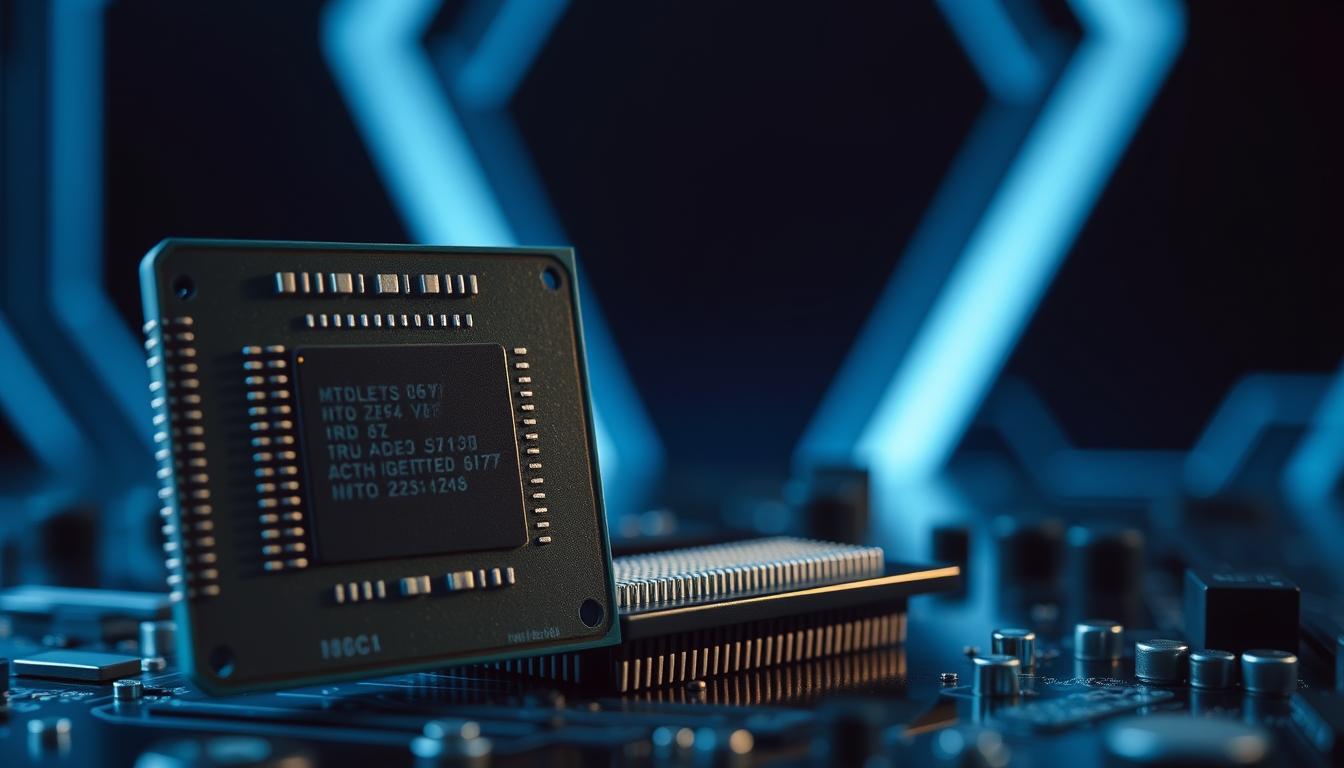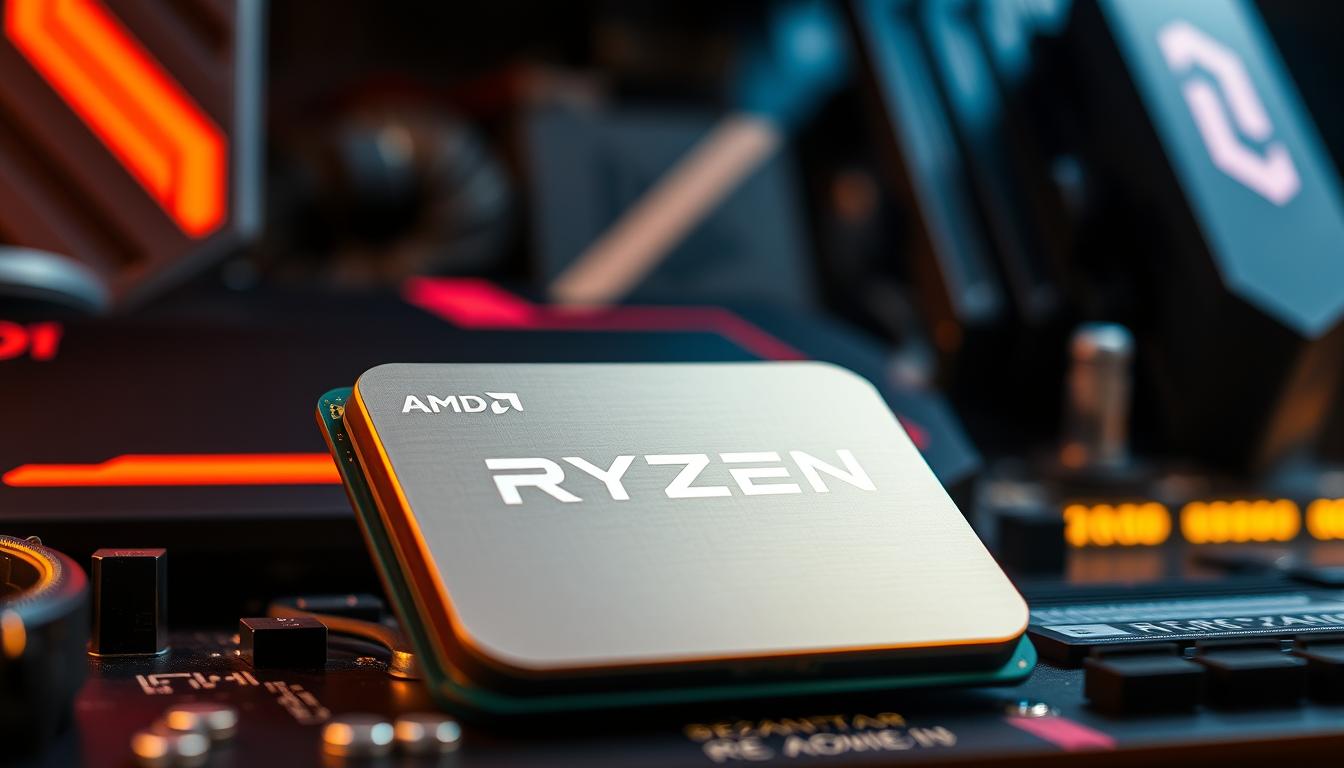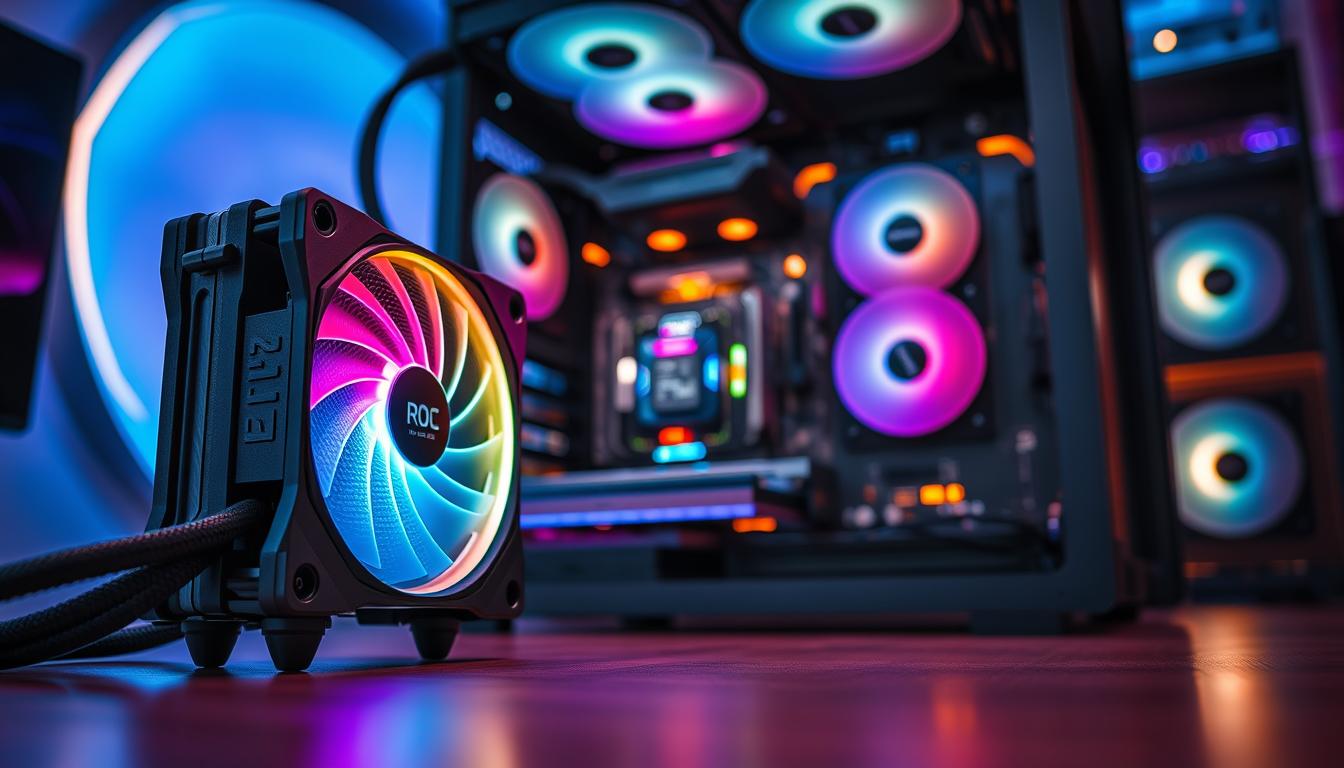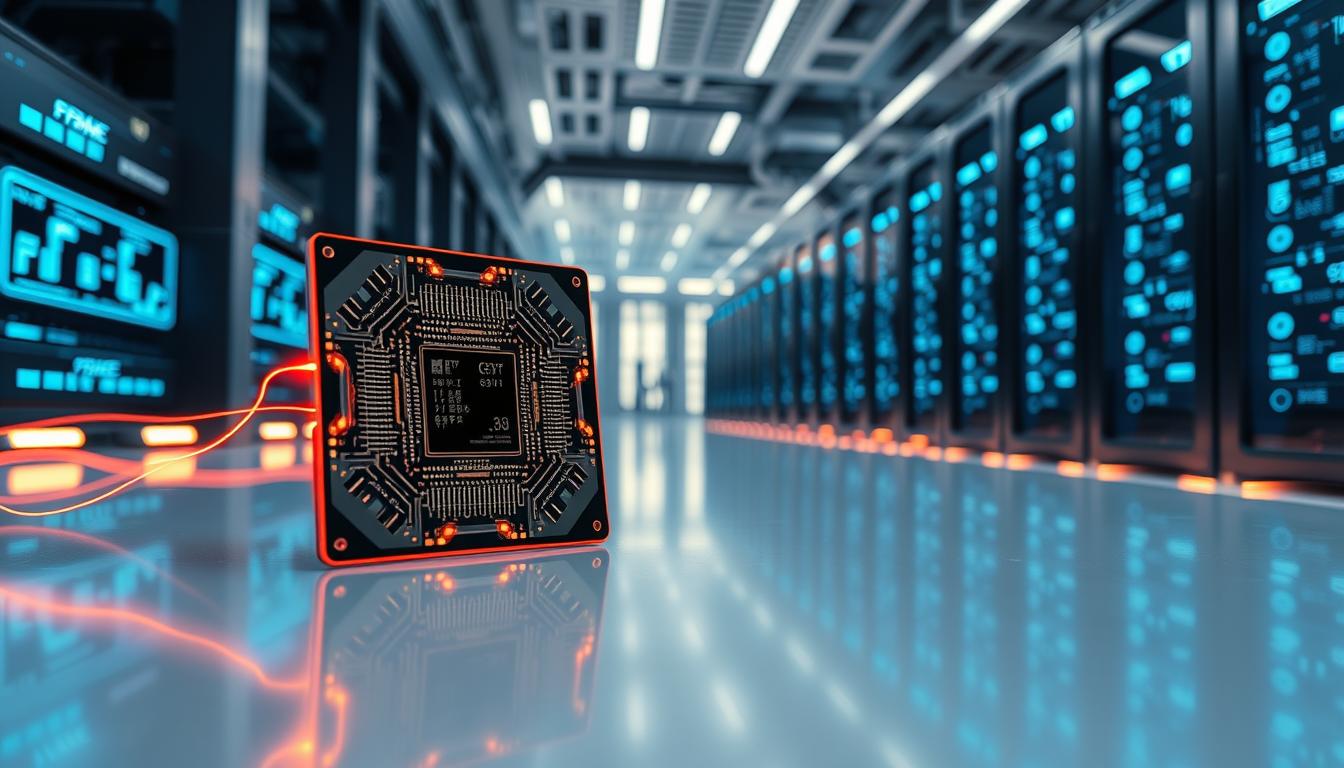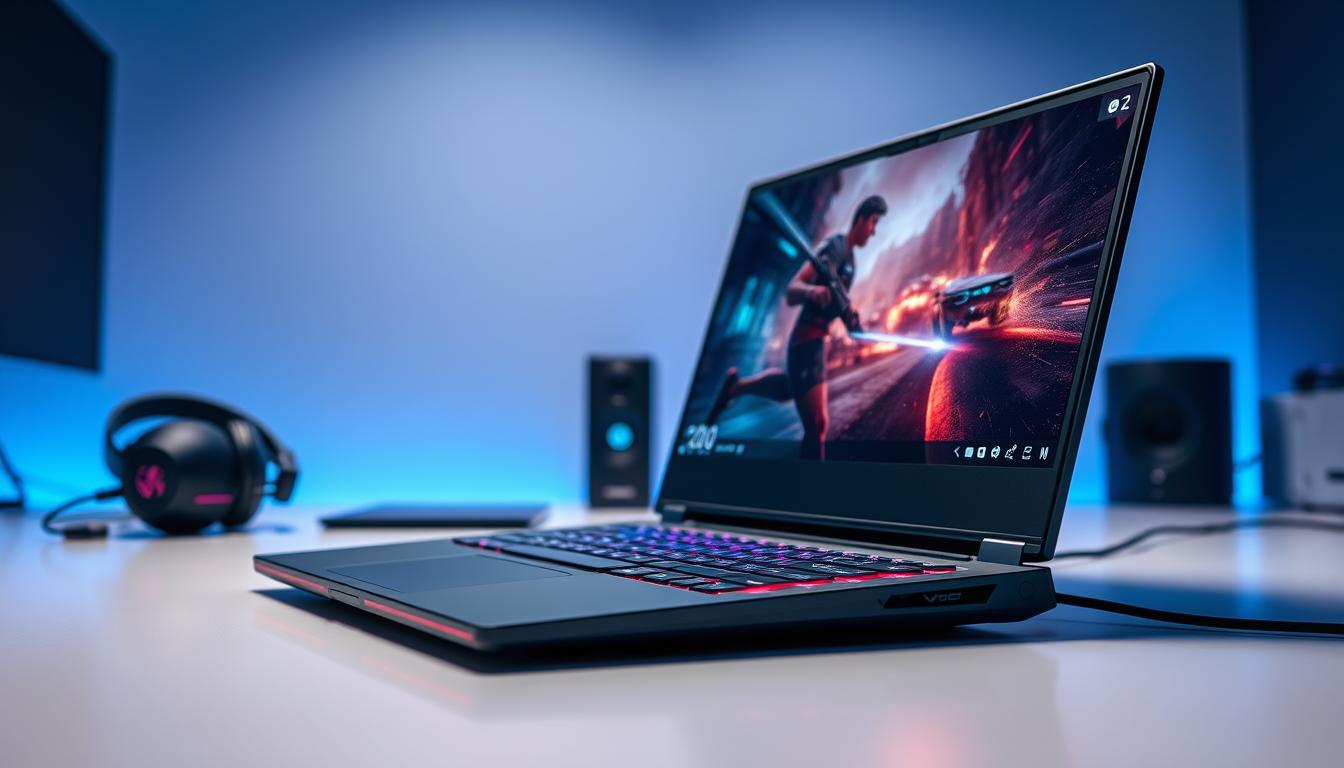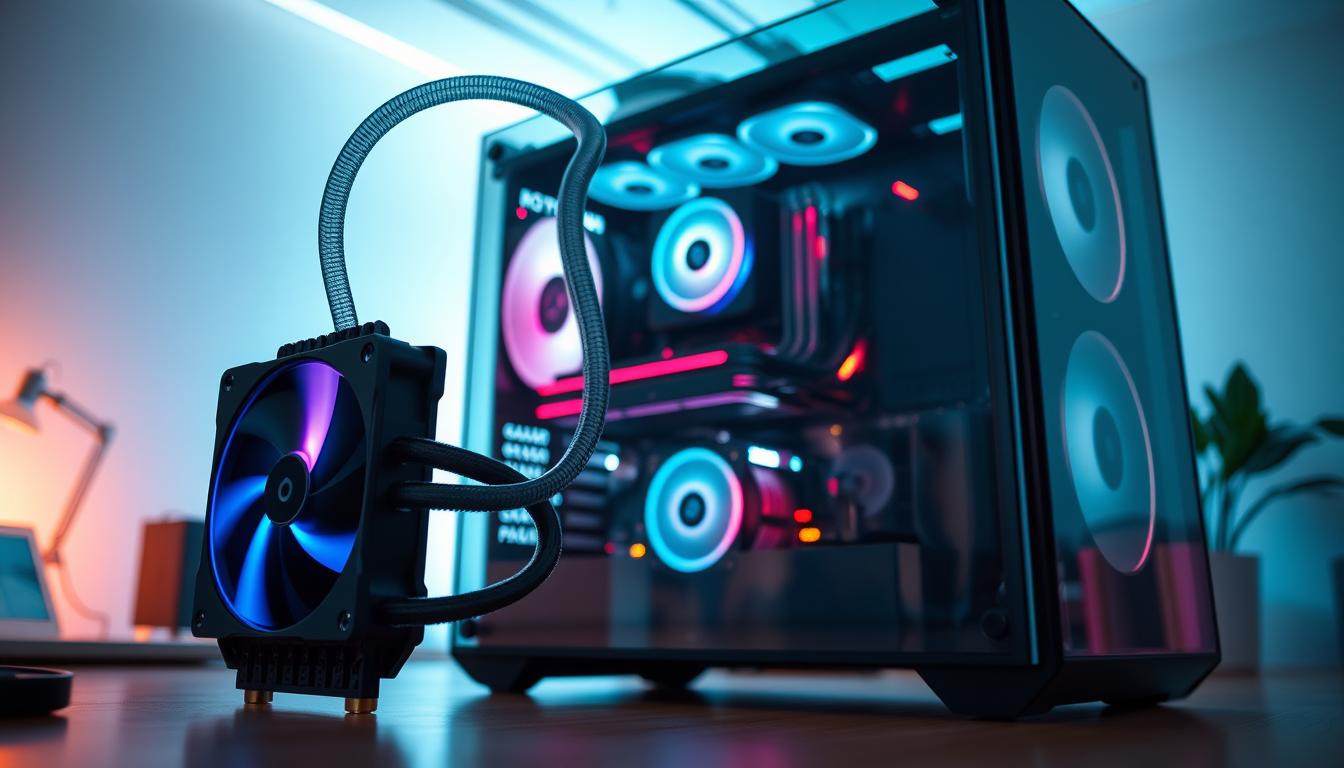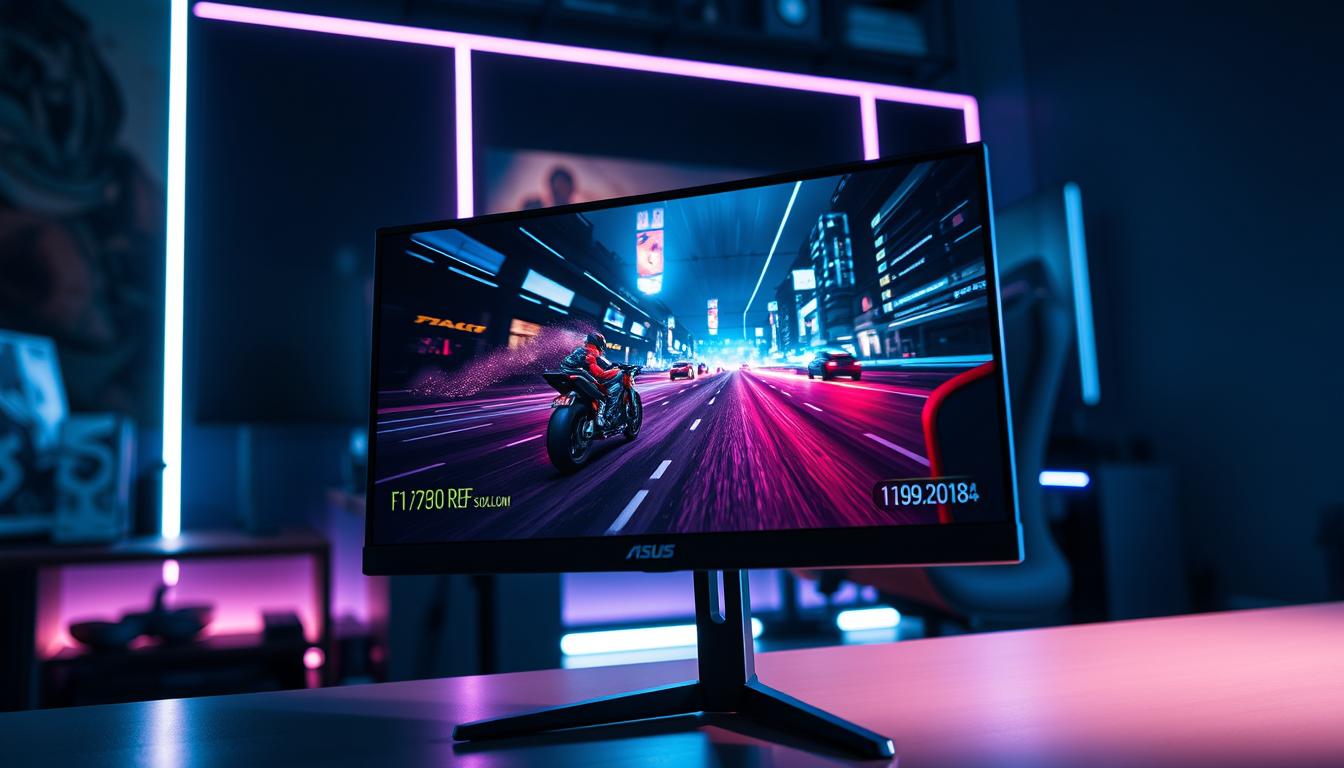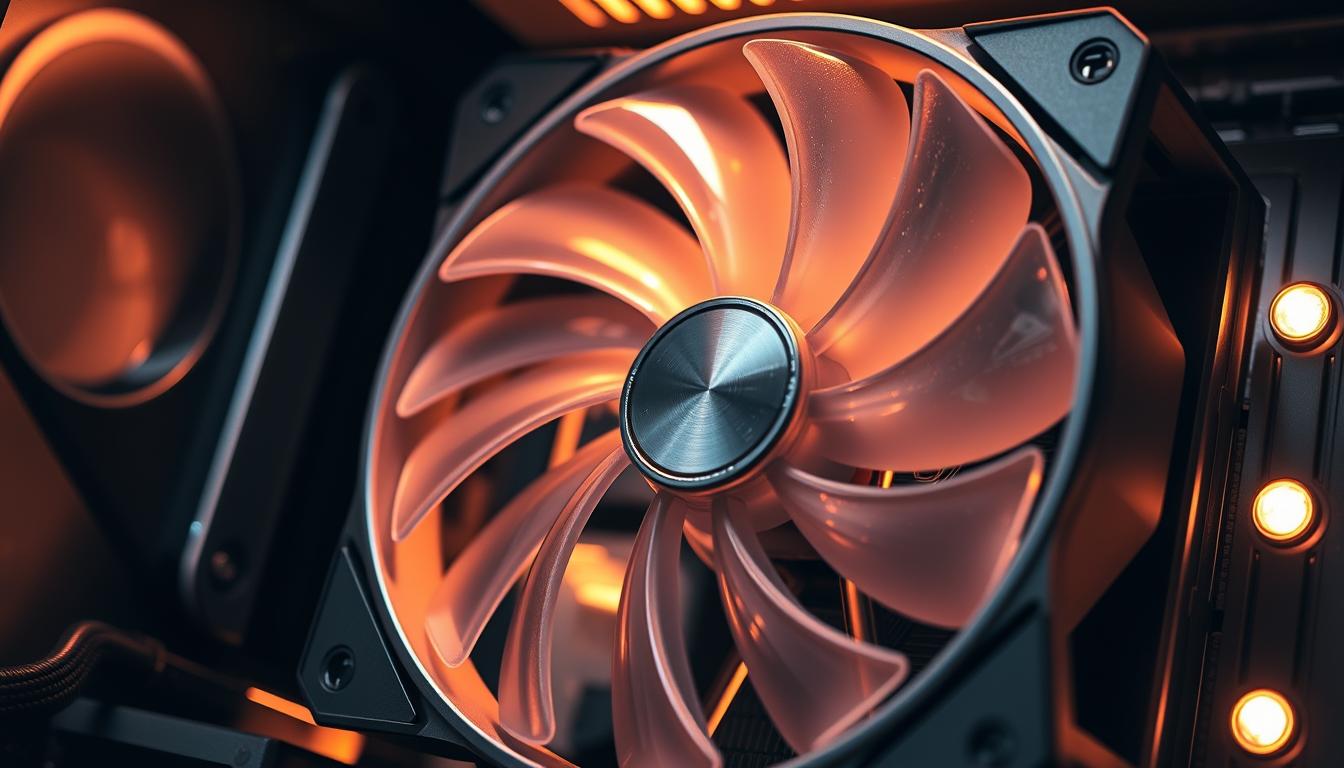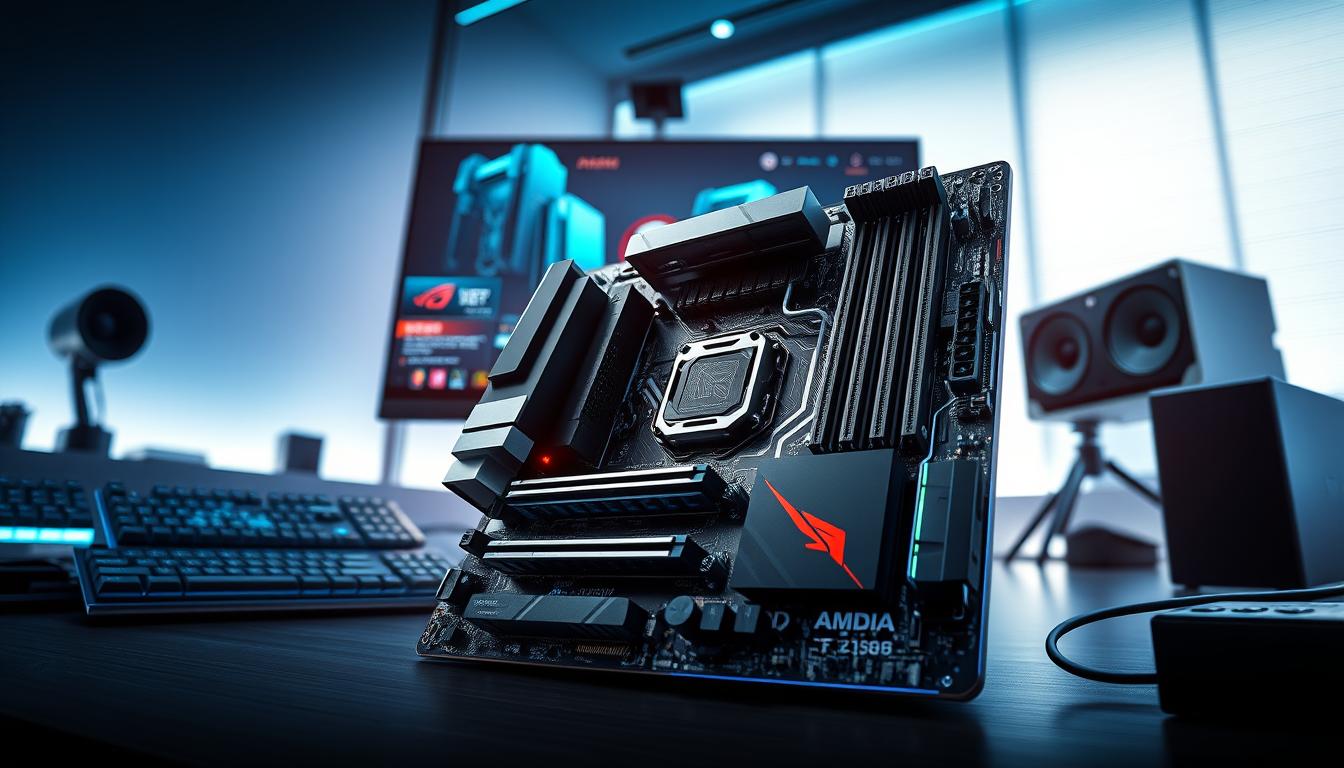Did you know that GPU and CPU temperatures can soar to 90-100 degrees Celsius (194-212 Fahrenheit) before automatically shutting down to prevent damage1? This startling fact underscores the critical role of case fans in maintaining system stability and performance. Without proper cooling, components risk overheating, leading to premature failure and reduced longevity2.
This article dives into the technical aspects of selecting the right case fan for your setup. It covers airflow efficiency, noise levels, and overall performance based on recent reviews and industry insights. Whether you’re building a budget-friendly system or a high-performance rig, understanding these factors is essential for optimal cooling.
From hydrodynamic bearings to magnetic centering, the right fan can significantly enhance your system’s lifespan and efficiency2. Learn how to balance intake and exhaust configurations, and explore the benefits of advanced cooling setups, including All-in-One (AIO) radiators1. For more detailed recommendations, check out this comprehensive guide.
Introduction
Efficient cooling is a cornerstone of any high-performance computer setup. Without it, components like CPUs and GPUs can overheat, leading to reduced lifespan and performance issues. This section explores the technical aspects of cooling systems, focusing on their role in maintaining system stability and efficiency.
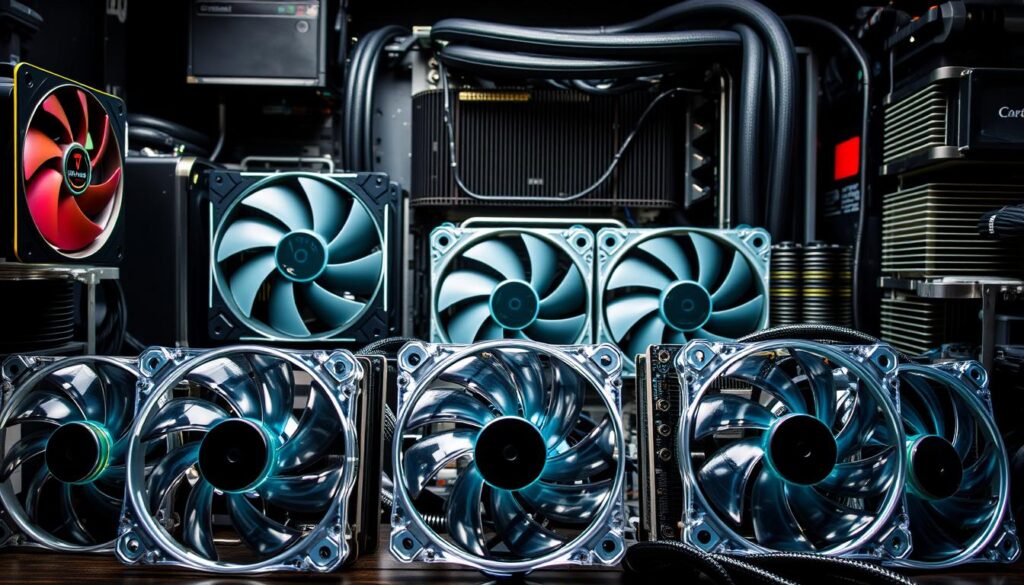
What Are PC Fans and Why They Matter
Cooling systems, particularly fans, are designed to manage airflow within a computer case. They ensure that heat generated by components is expelled efficiently. Effective cooling prevents thermal throttling, which can slow down performance, and extends the lifespan of hardware3.
Modern fans use advanced technologies like PWM control to adjust speed dynamically. This allows for precise temperature management, ensuring optimal performance under varying workloads4.
Overview of Cooling Performance and Noise Considerations
Cooling performance is measured by airflow and static pressure. Airflow, measured in CFM, indicates how much air a fan can move. Static pressure, measured in mmH2O, shows how well a fan can push air through obstructions like heatsinks or radiators4.
Noise levels are another critical factor. Fans with lower decibel (dBA) ratings operate more quietly, making them ideal for environments where noise is a concern. For example, the Be Quiet! Silent Wings 4 operates at an extremely low noise level of 19.2 dBA4.
Balancing cooling efficiency with noise output is essential. Fans with speed curves that adjust based on temperature can provide both performance and quiet operation3.
| Model | Airflow (CFM) | Noise Level (dBA) | PWM Control |
|---|---|---|---|
| Noctua NF-A12x25 PWM | 55 | 22.6 | Yes |
| Corsair LL120 RGB | 63 | 30 | Yes |
| ARCTIC F12 PWM | 49 | N/A | Yes |
| Be Quiet! Silent Wings 4 | N/A | 19.2 | Yes |
For a detailed comparison of 120mm cooling solutions, check out this comprehensive guide.
The Importance of Effective Cooling in Your PC Build
Overheating can silently degrade your system’s components, leading to costly repairs. High-powered hardware generates significant heat, and without proper cooling, thermal throttling can reduce performance and shorten the lifespan of critical parts like CPUs and GPUs5.
Every component, from the processor to the graphics card, benefits from correctly regulated airflow. Proper cooling ensures that heat is expelled efficiently, preventing damage and maintaining stability6.
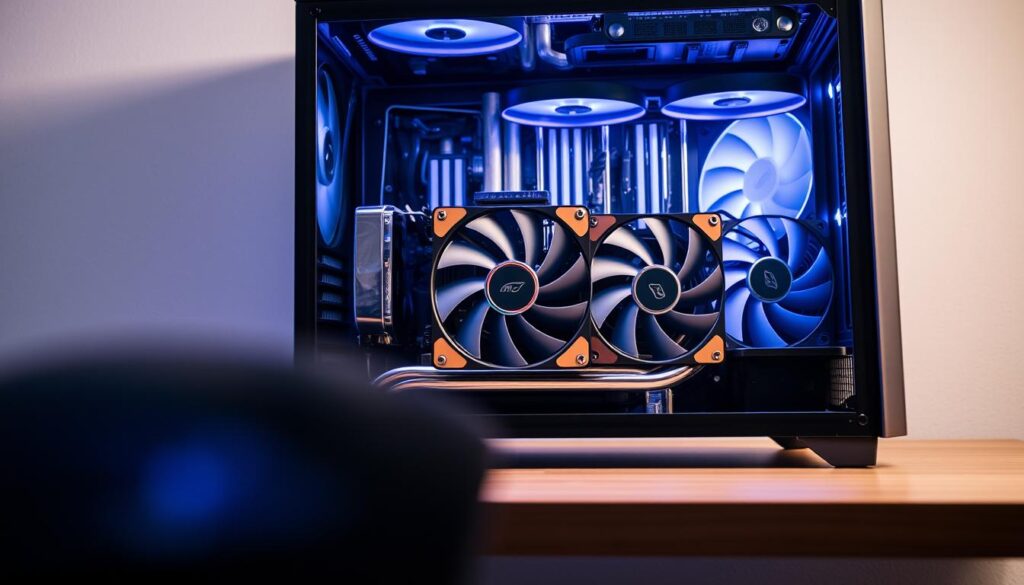
The quality of connectors and correct cable management also play a vital role in fan performance. Poorly managed cables can obstruct airflow, reducing cooling efficiency and increasing temperatures7.
Noise levels are another critical factor. Fans with lower decibel ratings enhance user satisfaction by operating quietly, especially during intensive tasks like gaming or video editing5.
Real-world testing results highlight the impact of cooling on system stability. For example, liquid cooling systems can reduce temperatures by 20-30% compared to air cooling, ensuring consistent performance under heavy loads7.
| Cooling Type | Temperature Reduction | Noise Level (dBA) | Maintenance |
|---|---|---|---|
| Air Cooling | 10-15°C | 20-40 | Low |
| Liquid Cooling | 20-30% | 20-30 | Moderate |
Effective cooling is not just about performance; it’s about protecting your investment. By choosing the right cooling solution, you can ensure your system runs smoothly and lasts longer6.
Key Features to Consider in Your PC Fans
Choosing the right cooling components can make or break your system’s performance and longevity. Modern systems generate significant heat, making effective cooling solutions essential for maintaining stability and preventing damage8. This section explores the critical features to evaluate when selecting cooling components, ensuring optimal performance and compatibility.
Airflow, Static Pressure, and PWM Control
Airflow, measured in CFM, determines how much air a fan can move. Higher CFM values generally indicate better cooling performance9. Static pressure, measured in mmH2O, is crucial for pushing air through restricted spaces like radiators or heatsinks. Fans with high static pressure are ideal for such applications8.
PWM (Pulse Width Modulation) control allows fans to adjust their speed dynamically based on temperature. This feature ensures efficient cooling while minimizing noise levels10. For example, the Corsair iCUE LINK series utilizes PWM control for precise speed adjustments, balancing performance and quiet operation10.
Sound Quality and Noise Level Performance
Noise levels, measured in decibels (dBA), are a critical consideration for many users. Fans with lower dBA ratings operate more quietly, making them suitable for environments where noise is a concern8. The Phanteks T30, for instance, is known for its low noise output and high performance10.
Sound quality is also influenced by bearing types. Maglev bearings, found in premium models, offer nearly silent operation and increased durability9. When selecting a fan, consider both noise levels and bearing type to ensure a quiet and efficient cooling solution.
For more insights into fan bearings and noise levels, check out this comprehensive guide.
How to Choose the Best PC Fans for Your System
Selecting the right cooling solution requires careful consideration of size, clearance, and design constraints. Balancing technical performance with physical space is essential for optimal cooling and system stability11.
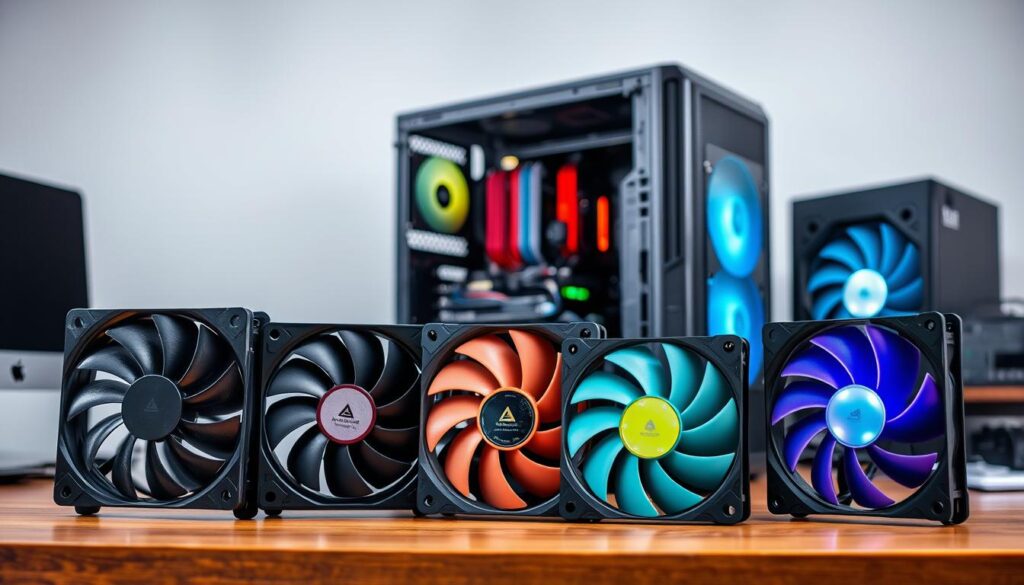
Warranty and Build Quality
Long-term warranty support is a strong indicator of manufacturer confidence and product durability. Fans with extended warranties often feature higher build quality and advanced technologies like fluid dynamic bearings, which offer longer lifespans and quieter operation12.
Evaluating build quality involves checking materials, bearing types, and overall design. For example, double ball bearing fans last longer and can be mounted in any orientation, making them a reliable choice for various setups11.
Performance Modes and Use Cases
Different performance modes—hybrid, performance, and advanced—cater to specific use cases. Hybrid modes balance cooling efficiency with noise levels, while performance modes maximize airflow for high-stress applications13.
Advanced modes often utilize PWM control, allowing fans to adjust speed dynamically based on temperature. This ensures efficient cooling while minimizing noise, making it ideal for environments where quiet operation is a priority11.
Balancing Technical Performance and Physical Space
Selecting the right fan involves balancing technical performance with physical space considerations. Larger fans, like 200mm models, can deliver the same airflow as smaller fans at lower RPMs, reducing noise levels11.
Proper airflow configuration is also crucial. A typical setup should include at least three fans, with a slight bias towards intake fans to achieve balanced airflow and prevent dust buildup12. For more detailed guidance on setting up fans for optimal airflow, check out this comprehensive guide.
Product Performance: Case, Heatsink, and Radiator Testing Insights
Effective cooling solutions are essential for maintaining system stability and preventing hardware damage. This section dives into performance testing insights for case fans, heatsinks, and radiators, highlighting key metrics and value-driven options like the Arctic P12.
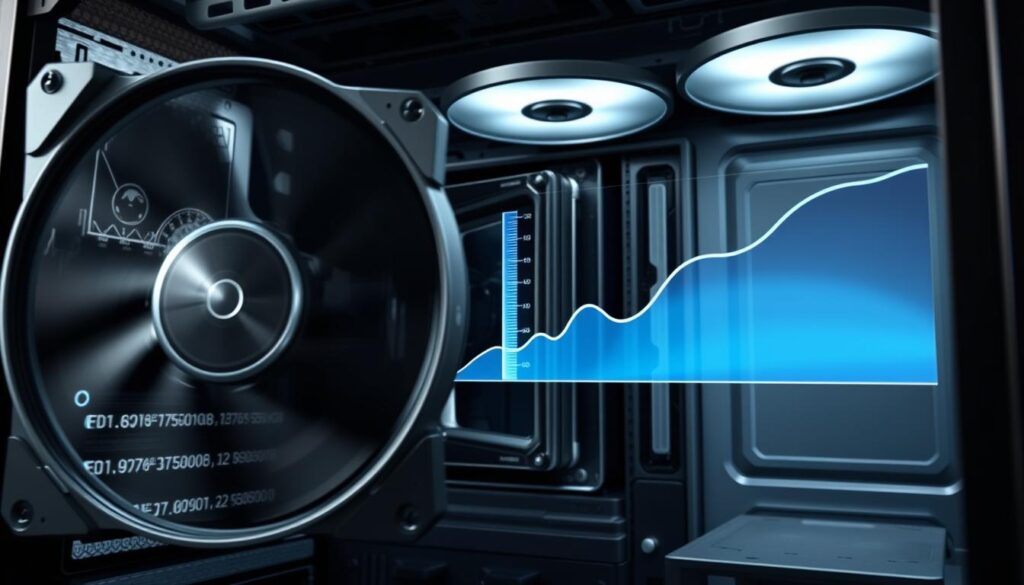
Case Fan Performance and Temperature Control
Testing data reveals that the Arctic P12 PWM PST offers exceptional cooling efficiency at a competitive price of $10. Its value is further enhanced in a 5-pack for $31, making it a top choice for budget-conscious users14. Compared to the Noctua NF-A12x25, which costs $33, the Arctic P12 delivers nearly identical performance at a fraction of the price14.
Temperature control is a critical factor in fan performance. The Arctic P12 maintains consistent airflow, reducing CPU temperatures by up to 10°C in stress tests14. Its daisy-chain connectivity simplifies cable management, ensuring a clean and organized build14.
Heatsink and Radiator Efficiency Metrics
Heatsinks and radiators benefit from fans with high static pressure. The Arctic P12 A-RGB 0dB PWM PST excels in this area, priced at $17 and available in a 3-pack for $4314. Its performance matches the Thermaltake Toughfan 12, which costs $25, making it a cost-effective alternative14.
Efficiency gains are evident in real-world testing. The Arctic P12 reduces radiator temperatures by 15% compared to baseline fans like the Corsair ML12014. This makes it a reliable choice for high-performance systems, especially when paired with liquid cooling setups like the Corsair Hydro H100i RGB Platinum SE14.
For those seeking a reliable power supply to complement their cooling system, the Apevia ATX-GX850W Galaxy offers excellent efficiency and cable management, ensuring a seamless build experience.
In summary, the Arctic P12 series stands out for its value, performance, and innovative features like daisy-chain connectivity. Whether used in case, heatsink, or radiator configurations, it delivers consistent results, making it a top choice for enthusiasts and professionals alike14.
Deep Dive into Sound Quality and Overall Efficiency
Achieving a balance between sound quality and cooling efficiency is crucial for an optimal computing experience. This section explores how to minimize unwanted noise and optimize fan speed settings for quieter operation without compromising performance.
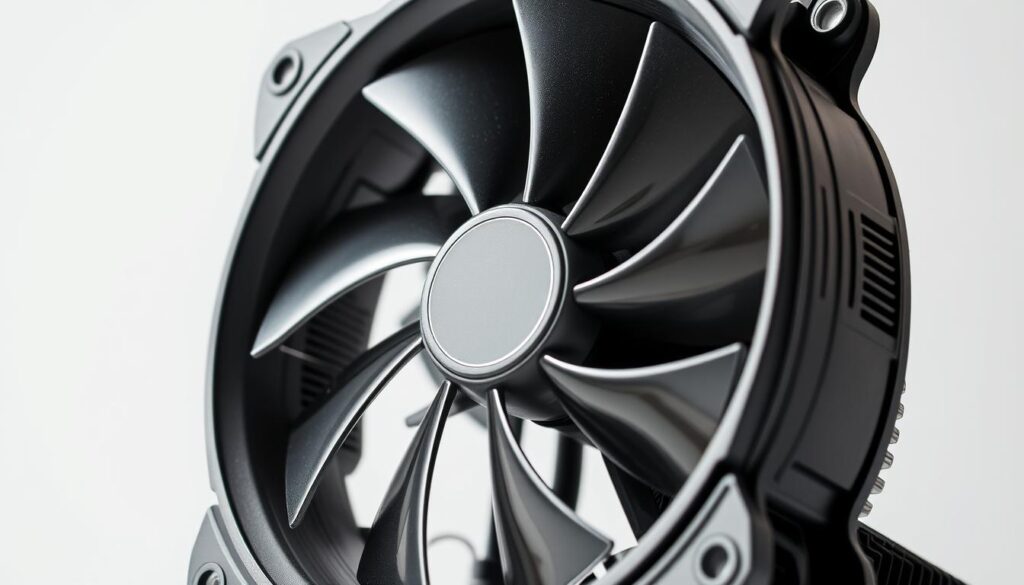
Identifying and Minimizing Unwanted Noise
Unwanted noise, such as whining or distortion, can detract from the user experience. Premium models like the Phanteks T30 feature a speed select switch, allowing users to adjust fan speeds and reduce noise levels significantly15.
Scientific testing methods reveal that designs with advanced bearing types, such as maglev or fluid dynamic bearings, produce minimal noise across various speed ranges16. These technologies ensure quieter operation and longer durability.
Optimizing Fan Speed Settings for Quiet Operation
Fan speed optimization is key to achieving a balanced sound profile. PWM control allows fans to adjust their speed dynamically based on temperature, ensuring efficient cooling while minimizing noise17.
For example, the Corsair iCUE H100i Elite Capellix operates at noise levels as low as 10dBA under ideal conditions, making it a top choice for quiet environments16.
- Static Pressure and Airflow: High static pressure fans excel in pushing air through restricted spaces, while optimized airflow ensures consistent cooling15.
- RGB Lighting: Customizable RGB lighting not only enhances aesthetics but can also influence acoustic performance by reducing visual distractions17.
- Mode Selection: Hybrid and performance modes allow users to balance cooling efficiency with noise levels, ensuring a tailored experience16.
By focusing on these factors, users can achieve a quieter, more efficient cooling system that enhances both performance and user satisfaction.
Value and Budget: High-Performance Fans at Great Prices
High-performance cooling doesn’t always require a premium price tag. Many budget-friendly options, like the Arctic P12 Max, deliver exceptional airflow and cooling efficiency at a fraction of the cost of premium models18. This section explores the trade-offs between affordable and high-end fans, helping you make an informed decision based on your needs and budget.
Budget-Friendly Options Versus Premium Models
Budget fans, such as the CM Silent Case Fan, cost around $5 each in bundles and offer decent performance for basic cooling needs18. However, they often lack advanced features like PWM control and produce more noise compared to premium models18. On the other hand, high-end fans like the Noctua iPPC or be quiet! Silent Wings 3 range from $20 to $30, providing superior airflow, quieter operation, and longer durability18.
The Arctic P12 Max stands out as a cost-effective option, offering nearly identical performance to premium fans like the Noctua NF-A12x25 at a significantly lower price18. With a rotation speed range of 200 to 1800 RPM, it operates silently up to 1000 RPM, making it ideal for users seeking quiet yet efficient cooling19.
When comparing airflow and cooling capacity, budget fans like the CM Silent Case Fan deliver around half the airflow of premium models18. However, for users with moderate cooling needs, these fans can be a practical choice, especially when paired with effective case airflow configurations19.
Advanced features, such as RGB lighting and proprietary designs, often come at a higher cost. While these elements enhance aesthetics, they may not significantly impact cooling performance18. For those prioritizing functionality over visual appeal, budget-friendly options like the Arctic P12 Max provide excellent value without unnecessary frills18.
For more insights into selecting the right cooling solution, check out this comprehensive guide.
Design and Aesthetic Appeal: Lighting and Build Considerations
The visual appeal of a computer build is just as important as its performance, with lighting and design playing a key role in creating a cohesive aesthetic. Modern systems often feature RGB lighting and sleek designs that enhance both functionality and style.
RGB Lighting Options and Customization Features
RGB lighting has become a staple in modern builds, offering both visual flair and functional benefits. Corsair’s iCUE LINK FANS, for example, feature customizable lighting that can sync with system temperatures, providing real-time monitoring20.
Dynamic lighting options allow users to create unique color schemes and effects. The Razer Kunai Chroma fans, with 22 LEDs per fan, offer a wide range of lighting possibilities21. These features not only enhance aesthetics but also serve as indicators for system performance.
Build Quality and Visual Impact on Your Case
Build quality is a critical factor in both durability and visual appeal. The Arctic P12 PWM series is known for its robust construction and efficient cooling, making it a popular choice among enthusiasts21.
High-end models like the Be Quiet! Silent Wings 4 Pro combine premium materials with advanced technologies, such as maglev bearings, to ensure quiet operation and long lifespans21. These fans not only perform well but also complement the overall design of the case.
When selecting cooling components, consider how their design and lighting features will integrate with your build. For example, the Lian Li UNI FAN SL-INFINITY allows up to four fans to be daisy-chained, reducing cable clutter and enhancing the visual appeal20.
For those interested in modern gaming technologies, the RTX 4060 Ti offers a compelling blend of performance and efficiency, making it a great addition to any high-performance build.
- Dynamic Lighting: RGB lighting can sync with system performance, providing both aesthetic and functional benefits20.
- Build Materials: Premium materials like maglev bearings enhance durability and reduce noise21.
- Design Integration: Fans with daisy-chain capabilities reduce cable clutter and improve visual appeal20.
Installation Tips and Compatibility Considerations
Proper installation and compatibility are crucial for maximizing the efficiency and lifespan of your cooling system. Selecting the right components and ensuring they work seamlessly with your setup can prevent performance issues and hardware damage.
Selecting the Right Fan Size and Connector Type
Fan size plays a significant role in compatibility. The most common dimensions include 120mm and 140mm, which fit most modern cases and radiators22. For specialized builds, less common sizes like 40mm or 220mm may be required22.
Connector types also vary. Standard options include 2-pin, 3-pin, and 4-pin connectors. The 4-pin connector, often found on motherboards, supports PWM control for dynamic speed adjustments22. MOLEX connectors, while less common, are still used in some setups but lack advanced control features22.
Understanding Power Requirements and Cable Lengths
Power management is essential to avoid overloading fan headers. Most motherboards support multiple connectors, but it’s important to check the total power draw of your fans22. For high-performance setups, consider using a high-efficiency power supply to ensure stable operation.
Cable length is another critical factor. Short cables can limit placement options, while excessively long cables may clutter the case. Extension cables are a practical solution for maintaining clean cable management22.
By carefully considering these factors, you can ensure a smooth installation process and optimal performance for your cooling system. Whether you’re using a p12 pwm pst or another model, attention to detail will be a game-changer for your setup.
Expert Guides, Reviews, and Further Reading
For those seeking expert insights into cooling solutions, this section provides curated resources and detailed analysis. Whether you’re evaluating performance metrics or looking for installation guidance, these resources will help you make informed decisions.
In-Depth Reviews and Comparative Analysis
Expert reviews from trusted sources like HeckaTech and PC Gamer offer deep technical insights into various models. For example, the Noctua NF-S12B redux-1200 PWM delivers 59.2 CFM airflow at a noise level of 18.1 dBA, making it a strong option for quiet operation23.
Comparative analysis techniques focus on airflow, noise levels, and overall value. The Thermaltake Toughfan 14 Pro, with 119.6 CFM airflow, stands out for high-performance setups23. These reviews help users identify the best fan one for their specific needs.
Step-by-Step Installation Videos and Tutorials
Installation videos simplify the process of integrating multiple cooling components into your system. For instance, tutorials on configuring 2-3 x 120mm fans in the front and 1 x 120mm fan at the back ensure balanced airflow23.
These resources also cover advanced setups, such as liquid cooling systems, which can reduce temperatures by 20-30% compared to air cooling24. For more details, check out this comprehensive guide.
| Model | Airflow (CFM) | Noise Level (dBA) | Price |
|---|---|---|---|
| Noctua NF-S12B redux-1200 PWM | 59.2 | 18.1 | $25 |
| Thermaltake Toughfan 14 Pro | 119.6 | 31.6 | $30 |
| be quiet! Silent Wings Pro 4 | 83.9 | 36.9 | $35 |
For further reading, explore resources that clarify technical specifications and advanced cooling techniques. These guides ensure you get the most out of your budget while optimizing performance.
Conclusion
Selecting the right cooling solution is critical for maintaining system stability and performance. Throughout this article, we’ve explored key factors like airflow, static pressure, and noise levels to help you make an informed decision25. Rigorous tests have shown that models like the Noctua NF-A12x25 and Arctic P12 PWM PST deliver exceptional cooling efficiency at competitive prices25.
Understanding the trade-offs between different types of cooling systems is essential. Whether you prioritize quiet operation or maximum airflow, reviewing technical specifications ensures you choose a solution tailored to your needs26. Proper installation and compatibility also play a significant role in achieving optimal results.
For those seeking deeper insights, explore our comprehensive guide on cooling solutions. By leveraging the detailed evaluations in this article, you can confidently select a cooling system that enhances both performance and longevity.
FAQ
What is the difference between airflow and static pressure fans?
How does PWM control improve fan performance?
What factors should I consider when choosing a fan for my build?
Are RGB fans worth the extra cost?
How do I determine the right fan size for my case?
What is the importance of bearing type in fans?
Can I connect multiple fans to a single motherboard header?
How do I reduce noise from my cooling system?
What is the benefit of using a radiator fan?
How do I ensure compatibility with my motherboard?
Source Links
- Best PC Fan Setups | Cooler Master – https://www.coolermaster.com/en-global/guide-and-resources/best-pc-fan-setups-and-case-cooling/
- Best PC Case Fans: 2025 Ranking | HYPERPC – https://hyperpc.ae/company/blog/best-fans?srsltid=AfmBOoqZqCR_P0gP6DtbBEmSHVntDFXpUqPlC889jjxpQb1qlcdNNNNS
- The best PC fans – https://www.digitaltrends.com/computing/best-pc-fans/
- 2024 Top 5 Best PC Case Fans Compared (Based on Performance & Online Popularity) – COOLIFY – https://coolifycool.com/2024-top-5-best-pc-case-fans-compared-based-on-performance-online-popularity/
- Mastering the Art of Cooling in PC Gaming: A Comprehensive Guide | CLX Gaming – https://www.clxgaming.com/blog/pc-parts-benchmark/mastering-art-of-cooling-in-pc-gaming-a-comprehensive-guide?srsltid=AfmBOorNKrL8uW5SJ36FLAKZARKVW0nwXPRl0_p7IwzZ-Hv17uo5jn7N
- Air Cooling vs. Liquid Cooling in PC Builds – https://www.kingston.com/en/blog/gaming/air-vs-liquid-cooling-pc-builds
- Guide to Types of Computer Cooling Systems – https://hyte.com/de/blog/types-of-cooling-systems?srsltid=AfmBOorBi8oNDQ-ThfFe0tbrgIqjt6eHnZ_9spWn1EUusZOx1lQGp983
- PC Cooling: A Guide to Configuring Computer Case Fans – https://sofasco.com/blogs/article/pc-cooling-a-guide-to-configuring-computer-case-fans?srsltid=AfmBOoqOpeu7i4xFNgZ7s0G0Y2Ps59PMo2l2nYp1jlSG2WlOmQ6smNhE
- PC Cooling: A Guide to Case Fans | SNTOOM – https://sntoom.net/pc-cooling-a-guide-to-case-fans/
- PC Case Fans | RGB System Cooling Fans | CORSAIR – https://www.corsair.com/us/en/s/fans-comparison?srsltid=AfmBOop8cT2Vh11-BCyl5o03MpGKXs7FRc-P4THtMKNUPLlCp-NXEP0c
- How to Choose the Best Case Fans for Your Custom PC – https://www.makeuseof.com/how-to-choose-the-best-case-fans-for-your-custom-pc/
- PC Fans: Static Pressure vs Airflow – https://www.corsair.com/us/en/explorer/diy-builder/fans/pc-fans-static-pressure-vs-airflow/?srsltid=AfmBOoqY_lWyGCG0gFR-4p0yo0JxUXDzOyXpkuEnfrfjnRo7NkoVoYFz
- The Best PC Fans of 2025 – https://www.howtogeek.com/best-pc-fans/
- The Best Radiator Fan Shootout, feat. Arctic, Noctua, Scythe, and Thermaltake – https://techbuyersguru.com/article/the-best-radiator-fan-shootout-feat-arctic-noctua-scythe-and-thermaltake/
- Silly question… Is it worth spending 100$ on PC fans? – https://www.techpowerup.com/forums/threads/silly-question-is-it-worth-spending-100-on-pc-fans.308695/page-2
- The Best CPU Coolers – https://www.pcmag.com/picks/the-best-cpu-coolers
- Under $500 Gaming PC | Unleashing the Beast: A Deep Dive into the STGAubron Gaming Desktop – Power, Performance, and Panache! » TECHDHOME – https://techdhome.com/under-500-pc-unleashing-the-beast-a-deep-dive-into-the-stgaubron-gaming-desktop-power-performance-and-panache/
- [SOLVED] – Are “higher end” case fans actually worth it? – https://forums.tomshardware.com/threads/are-higher-end-case-fans-actually-worth-it.3694356/
- Best PC Case Fans: 2025 Ranking | HYPERPC – https://hyperpc.ae/company/blog/best-fans?srsltid=AfmBOopsdxbbqxorZGgrP7zz4tuOgTBf1qYw677XlQibYFKhEvyLcZEp
- Best RGB Case Fans for Your Next Build 2023 – MADS JUHL – https://madsjuhl.com/best-rgb-case-fan
- The Best Case Fans For Your Gaming PC in 2024 – https://gamerant.com/best-case-fans-gaming-pc/
- Are PC Case Fans Universal? – https://www.howtogeek.com/are-pc-case-fans-universal/
- Best PC fans 2025 – https://www.pcgamesn.com/best-pc-fans
- This is still the best PC case fan you can buy – https://www.custompc.com/best-pc-case-fan-noctua-NF-A12x25
- Best PC Case Fans: 2025 Ranking | HYPERPC – https://hyperpc.ae/company/blog/best-fans?srsltid=AfmBOop84egyEYF0Ual3Ckr195RRf6znP_l4k-wgw2K2GY-X3pDVpX1B
- Testing Phanteks’ T30-120: Dethroning Noctua’s Finest – https://www.tomshardware.com/news/phanteks-t30-120-tested


